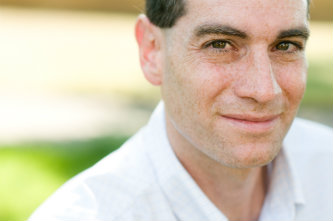Developing Geospatial Literacy
Where are the best places to create bike lanes in the City of Allentown? Where should city officials plant trees and create green spaces to, perhaps, curb crime? How can zoning improve the quality of life for city residents now and in the future?
Ninth-grade students in the Allentown School District’s newest high school, Building 21, will be able to tackle such questions—and build STEM-related skills in the process—as part of an innovative, geospatial curriculum approach to learning that is under development by Lehigh researchers.
Led by Alec Bodzin, professor of instructional technology and teacher education in Lehigh’s College of Education and a core faculty member of Lehigh's Environmental Initiative, the team of researchers is collaborating with Building 21 teachers to design, implement and evaluate a series of socio-environmental science investigations that students will conduct as part of their studies.
The three-year Strategies Project is funded by a $1.2 million grant from the National Science Foundation. Through hands-on activities that will be incorporated into science and social studies classes, students will learn how to think spatially and solve problems. They also will be exposed to careers in STEM (Science, Technology, Education and Mathematics)-related fields.
“Right now, in a lot of fields, geospatial literacy is important in developing skills,” said Bodzin. “If you go into city planning, if you do environmental planning, if you work in civil engineering—there are just a lot of industries that use GIS (geographic information systems) now. It’s a good skill set to have. And a lot of these spatial thinking skills transfer into a lot of other disciplines and other areas.”
Lehigh co-investigators on the project are Thomas C. Hammond, associate dean of the College of Education; Breena Holland, associate professor of political science and a participating faculty member in the university’s Environmental Initiative; David Anastasio, chair of the Earth and Environmental Sciences Department; Dork Sahagian, professor of Earth and Environmental Science and a core faculty member of Lehigh's Environmental Initiative; Joan Fu, professor of practice in Education and Human Services; and Scott Rutzmoser, senior geospatial specialist, Library and Technology Services. STEM educator Kate Popejoy is also a co-investigator.
Mentors will be a critical component of the project, Bodzin said. Partners include the City of Allentown's zoning office and parks and recreation department, and PPL Electric Utilities.
“Students need to be engaged in school, and they need to be doing things that are inquiry-based in active learning environments,” said Bodzin. In school districts such as Allentown, where attrition rates are a concern, “school has to be meaningful and relevant to them….They have to see that, ‘yes, I can do these types of things.’”
The student investigations will be designed to prepare each group of ninth-graders for both college and careers.
“If you look at a lot of jobs now,” said Bodzin, “people are gathering data with handheld devices. Everything’s going mobile.”
The Lehigh researchers are working on prototypes for several student investigations into zoning, air pollution, transportation, flooding, urban heat islands, waste management and other areas. Learning goals will drive the design process, Bodzin said.
In one activity, students will map and analyze transportation routes for buses, cars, biking and walking—how people move around. They’ll look at routes to their school and their favorite shopping mall. They’ll probe: Where are the best places to add bike lanes? How can the area be developed in a more sustainable way?
In another activity, they’ll gather heat data, identify trees and vegetation and investigate whether the placement of trees and vegetation correlates to crime or low-income areas. They’ll make recommendations to city officials as to the best places in Allentown to create new parks or plant trees.
The students also will use iPads with built-in GPS systems to gather data on the city’s zoning boundaries, including the locations of schools, parks, cluster housing, churches and open spaces. Their data will become an interactive map on a Web GIS.
Other areas of study that are being considered include: How has land use in Allentown changed over time? Where should power lines be located? How can the city plan for the future in regard to resources, flood preparedness and disaster response? How does the waste that people produce impact the environment?
In addition to teaching geospatial skills and exposing students to careers, Bodzin said, “We’re hoping to develop thoughtful citizens and to help them to make informed decisions.” As the students get older, he said, they might choose to get involved in city government or make sure their voices are heard on the issues.
Though the Lehigh team has conceptualized 12 to 14 student investigations, it’s likely that five to seven of them will be fully developed, said Bodzin. Several of the investigations will move to prototype by spring, with pilot testing, then field testing, to follow.
Posted on:





